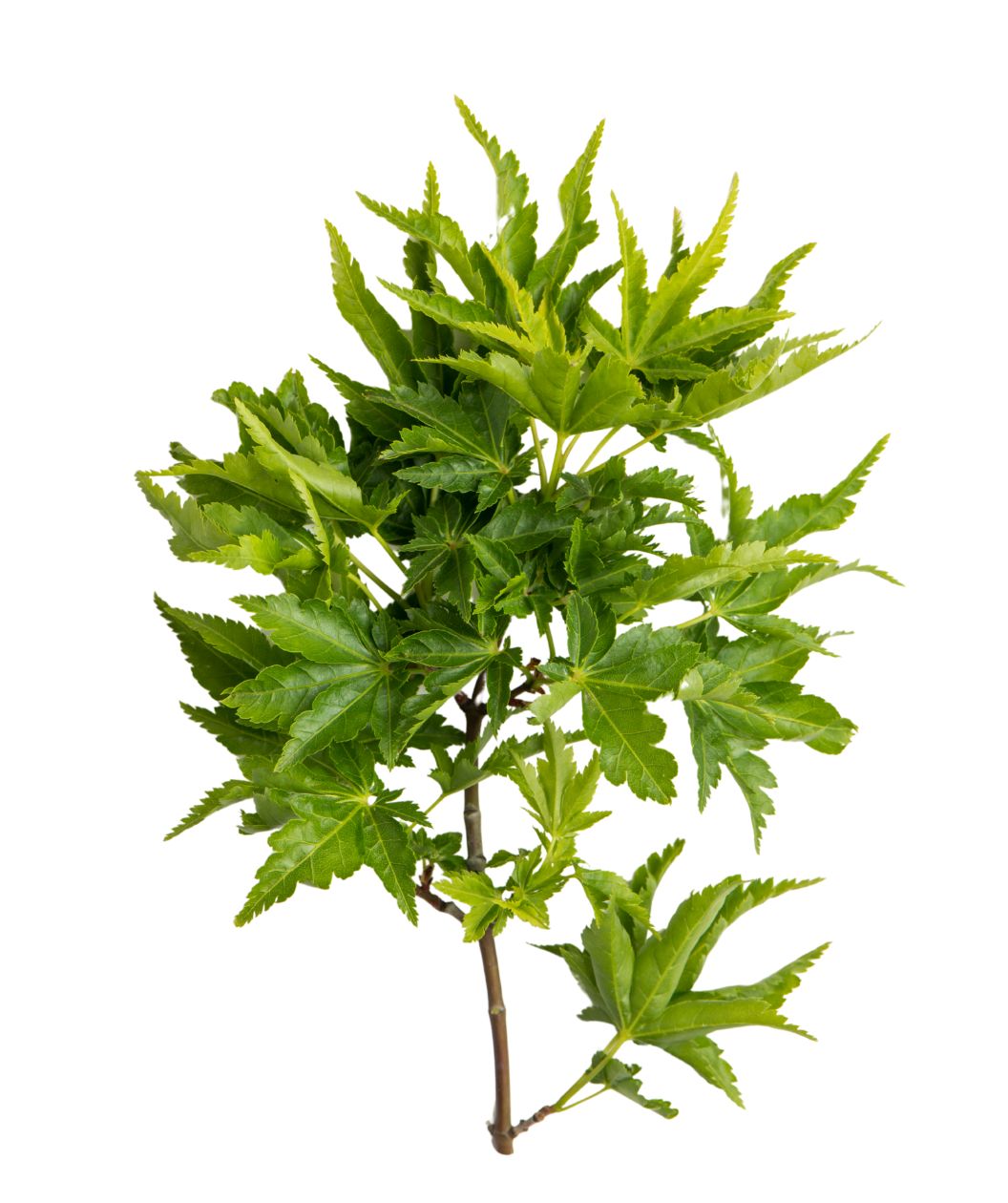


A standout Japanese maple with sculptural appeal and dense, curled foliage. Its upright, compact form and dramatic fall color make it a favorite for refined landscapes and small spaces.
Key Features:
- Deep green, crinkled leaves resemble a lion’s mane
- Brilliant gold, orange, and crimson tones in fall
- Naturally dense and tidy growth habit
- Upright and compact
Landscape Use:
- Specimen or focal point in foundation beds or island plantings
- Japanese-style or formal gardens
- Courtyards, patios, and containers
- Small urban gardens or intimate spaces
- Works well alongside evergreens, boulders, or water features
Design Tip: Use the Lion’s Head Japanese Maple to add texture and formality without overwhelming a space. It pairs well with fine-textured grasses, dark foliage shrubs, and stone features.
Growth Facts
- Hardiness Zone: 6-8
- Mature Height: 15'
- Mature Width: 10'
- Exposure: Sun/Part Shade
- Spacing: 8-10'
A standout Japanese maple with sculptural appeal and dense, curled foliage. Its upright, compact form and dramatic fall color make it a favorite for refined landscapes and small spaces.
Key Features:
- Deep green, crinkled leaves resemble a lion’s mane
- Brilliant gold, orange, and crimson tones in fall
- Naturally dense and tidy growth habit
- Upright and compact
Landscape Use:
- Specimen or focal point in foundation beds or island plantings
- Japanese-style or formal gardens
- Courtyards, patios, and containers
- Small urban gardens or intimate spaces
- Works well alongside evergreens, boulders, or water features
Design Tip: Use the Lion’s Head Japanese Maple to add texture and formality without overwhelming a space. It pairs well with fine-textured grasses, dark foliage shrubs, and stone features.
Growth Facts
- Hardiness Zone: 6-8
- Mature Height: 15'
- Mature Width: 10'
- Exposure: Sun/Part Shade
- Spacing: 8-10'
Why plant Lion's Head Japanese Maple?
The Lion’s Head Japanese Maple is a regal specimen tree for your entryway garden, patio, courtyard, or any of the spaces around your home in need of a distinctive focal point. With its proud, upright posture and thickly set, tufted foliage, Lion’s Head (a.k.a. ‘Shishigashira’) gives an impression of big-cat confidence and strength in the landscape. When the ruffled leaves turn golden-orange in the fall, the transformation into proud “lion” will be complete. Plant this slow-growing legacy tree where it will reign for many years as King of the Garden! The Shishigashira Maple arose in Japan in 1882, but its legend goes back much further. “Shishi” is a mythical lion creature believed to have the power to ward off evil spirits. A pair of Shishi statues often guards shrines in Japan. Many Japanese people are also familiar with “Shishi-mai,” the “Lion Dance” from a play dating back to the 8th Century. The actor wears a Shishigashira, or Lion’s Head mask while performing the ancient dance. Because of this tradition, even today when a baby boy is born in Japan, a little Shishigashira mask is sometimes placed near him to protect him from evil. Might we suggest planting a Shishigashira Maple for your youngster instead?
How to use Lion's Head Japanese Maple in the landscape?
This tree’s compact growth habit and closely set foliage make it a favorite subject for bonsai enthusiasts, who form it into ancient-looking, umbrella-shaped trees. In the landscape, Lion’s Head Japanese Maple forms more of an ice cream cone shape, with a low-branched, vase-shaped trunk and a rounded top. It reaches a height of 15 to 20 feet after several decades and spreads to no more than 10 feet.
How To Plant Lion's Head Japanese Maple
Shishigashira’s thick, deep green leaves are more sun tolerant than those of most Japanese Maples, so a site in full sun is suitable as long as ample water is provided. However, some protection from intense sunlight, heat, and wind will serve this choice specimen well. It isn’t fussy about soils as long as drainage is adequate. Lion’s Head Maple makes a wonderful container tree for a large patio planter, but keep in mind that trees kept in pots are always less hardy than those planted in the ground. This tree leafs out later than most Japanese Maples and is more likely to avoid a late frost that may zap others back.




